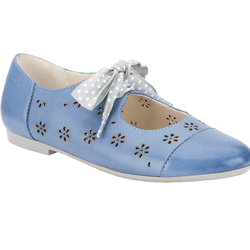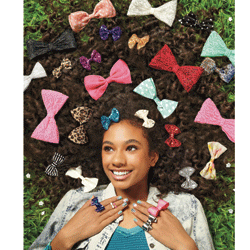The state of play
As the industry waits for the Government’s reaction to the Bailey Review and lobby groups step up their efforts to ban advertising to under-11s, can there ever be an ethical way to market to children?

The Government has pledged to crack down on irresponsible advertising
“Suckled on lies” is the headline that columnist George Monbiot used for an article about how brands target children. It followed an open letter by lobby group Leave Our Kids Alone to the Daily Telegraph last month, urging a ban on advertising to under-11s.
Monbiot’s strong views have sent ripples through the industry, not least among the brands he accused of targeting “defenceless” children with “precision and ruthlessness”.
Clamping down on the commercialisation of children was one of the coalition Government’s key objectives when it came to power in 2010, but as the industry waits for recommendations following the Bailey Review (see speed read, right) the marketing landscape continues to gain complexity.
The rise of digital communication channels and in-school advertising, in particular have been singled out as stress points by parents who claim there is a lack of control over messaging to youngsters. Earlier this month, a group of parents in the US sued Apple for ‘unfairly profiting’ from in-game purchases.
Judging by children’s minister Edward Timpson’s initial findings of the review though, it seems a full-on ban is unlikely as he believes “heavy handed and unnecessary Government regulation of the ad industry is to be avoided” so long as self-regulation continues to effectively protect children and reassure parents. But nonetheless brands must take responsibility.
Ian Twinn, Incorporated Society of British Advertisers (ISBA) public affairs director, says the biggest problem society faces today is that children have much easier access to digital media than their parents did growing up, so, as a result, have not always understood what their children might be getting up to.
“I accept that parents need help,” he says. “It isn’t just their responsibility to protect children, it is the advertisers’ job as well, and we’re not abdicating that. But if the Government was to ban advertising rather like in Sweden [where TV and radio ads targeting under-12s are forbidden] people will watch foreign media instead [because of a lack of funding for content]. In a global world how can England put up barriers around its coastlines so nothing nasty gets in? You can’t do it, which means we need to campaign hard to make sure there are good rules everywhere.”
The fact remains that brands do target children and may always be subject to scrutiny as a result, but how can they target in an ethical manner?
Nike is one of the brands singled out by Monbiot, alongside Adidas, Orange, Tesco and Unilever, as having advertised to secondary school children via hoardings in schools.
Nike says the main intention of that particular 2008 campaign was to encourage teenage girls to take up sport, not to sell goods to unwitting minors.
“The UK was experiencing falling sport participation levels among young females so we decided to book poster sites in secondary schools via [agency] TenNine as part of the wider ‘Here I Am’ campaign,” explains Ryan Greenwood, Nike UK and Ireland communications director.
And although some cynics may accuse the sports firm of carrying out the activity to build advocacy for the brand among impressionable teens, the positive effect initiatives such as this create should also be taken into account, says Nike.
Although the campaign took place five years ago, the sports giant has since invested in similar projects including Nike Training Club Schools. It claims the initiative resulted in 1,400 pupils in London schools taking part in at least one sports class in 2012, with 60 per cent of girls attending 10 or more sessions.
Involvement in sporting or educational activity is one way brands look to build lasting relationships with children, particularly among brands in the food and confectionery market.

Chewits launched its Sports Courses in 2008 to educate about balancing treats in a healthy diet
Sweet brand Chewits launched Chewits Sports Courses in 2008 with sports activity provider Premier Sport. It has since had more than 800,000 visits from 5 to 11 year olds during school holidays.
Hollie Roberts, its UK brand marketing manager says: “The sports courses provide a great way of educating children about the importance of active lifestyles while encouraging them to be treat-wise and balanced with their diets.”
Similarly, McDonald’s, which has long been attacked for encouraging obesity among children, has made a conscious effort to improve its offer to children, both in terms of product and marketing.
Only one quarter of the Happy Meal menu is now classified as high in fat, salt and sugar and none of these items are featured in advertising aimed at children. Forty per cent of the chain’s media spend is dedicated to ‘Smart Eat’ messaging and it only features healthy food and drink like fruit and mineral water in advertising for Happy Meals.
McDonald’s also uses licensed characters to help increase the popularity of healthier foods. The restaurant renamed some Happy Meal items as part of a promotion for the Shrek Forever After movie, including Puss in Boots Milk, Donkey Carrot Sticks and Princess Fiona Fruit Bags, which generated a 15 per cent sales increase compared to the pre-promotion period, it claims.
Being associated with popular characters has also helped boost shoe retailer Clarks’ brand perception among children. It collaborated with Perri and Jordan from dance group Diversity last year to launch a competition called Step it Up aimed at children aged eight to early teens to find a budding dance crew. The brand’s ‘cool’ rating among children rose 17 per cent and the retailer is now set to launch Step It Up 2.

Clarks has collaborated with members of Diversity to appeal to young customers

Alison MacDonald, head of marketing (UK & ROI) at Clarks, says: “We seek out partnerships with children’s media such as Nickelodeon as they mirror our approach and fit with the Clarks brand values for working and communicating with children.”
In addition to promoting active lifestyles, it is accepted that encouraging children to read is a positive thing. As such, Jon Woolcott, marketing manager at Waterstones, says it has to be clear and honest in the way it communicates with children so as not to damage this trust.
“We don’t want to deceive and we would never do anything like give away confectionery with a purchase,” he says.
Woolcott says one of the main ways it communicates with children is through in-store activity. The retailer has invested in its kids’ sections over the past year by adding bright colours and imagery to engage younger audiences, as well as running its long-standing programme of story time events in stores.
“We want to create an environment that will encourage them to come to our shops frequently. Although there is a commercial imperative to all of this, we do want to create a fun experience for children that gets them interested in reading.”

Waterstones connects with children through in-store activities
Waterstones also has strong ties with schools, as does the book trade in general, so contacts teachers when it has offers, as well as setting up stalls in schools at their request - another form of in-school marketing but one that Woolcott believes is less likely to cause offence.
“I think we’d be a long way down the list as a target. It would be a brave lobbyist that would want to stop people talking about books to children,” he says.
When it comes to advertising in schools, it is worth noting that 30 per cent of the campaigns run by TenNine, one of the advertising agencies that came under attack in Monbiot’s article, are social responsibility campaigns for anti-smoking, healthy eating and charities, with the remainder primarily based around youth recruitment.
Although educating teenagers about such issues is a good thing, it is the concept of advertising to children in schools for commercial gain that is met with the most severe criticism, particularly when it is aimed at those under 11.
Justine Roberts, founder and chief executive of parents’ site Mumsnet has seen a rise in the level of in-school marketing over the past few years, which is causing concern among its users.
“Why on earth should schools be helping companies promote services and goods,” she asks. “It’s ridiculous - schools should be a safe haven. Parents [feel they should be able to] trust schools to enforce that and so are very disappointed by examples where schools have been seen to be bowing to commercial pressure.”
Guidelines by the Department for Education and ISBA state that commercial activity in schools must provide a greater educational benefit to children than financial advantage to the school.
The ‘Working With Schools - best practice principles’ were published more than 10 years ago, however, and there have been calls for them to be updated. The Advertising Association has also set up its Check website, in partnership with broadcaster Turner, including legislation and guidance when marketing to children.
Brands want to attract children from an early age and begin building brand advocacy because the brands we have as a child are the ones we tend to have a long-term affinity with. But responsible brands also understand they need to comply.
Speaking at the Youth Marketing Strategy 2013 last month, Daryl Fielding, former vice-president of marketing at Kraft Foods Europe, confirmed that fact. “Kraft is very ethical about not targeting children nor advertising to children, but at the same time the bar of chocolate that you grow up with is the one that you want. It was always very much a balance between marketing ethically, but also making reference to your products, and that was a difficult line to navigate.”
At present the Advertising Standards Authority (ASA) states that ads addressed to, targeted at or featuring children must not exploit their credulity or lack of experience, and they must not be made to feel inferior, unpopular or disloyal for not buying a product.
Ads must also not be misleading and the ASA states that adult permission should be obtained for complex or costly items.
To educate children about advertising, ISBA funds Media Smart - an independent initiative that provides free information and lesson plans to primary schools. Material has been requested by 9,397 UK primary schools to date.
ISBA public affairs director Ian Twinn says: “Children live in a commercial society. They are consumers and they do have money to spend, whether it’s on snack treats or toys. Why are we saying to them that they have no right to understand what choice there is? Let children make up their own minds, but have strict rules in place to protect them.”
In a bid to cut down on childhood obesity, Ofcom introduced broadcasting restrictions in 2006 forbidding advertisers from promoting products that are high in fat, sugar and salt (HFSS) during children’s TV shows. As a result, children now see 37 per cent less HFSS advertising.
Mumsnet’s Roberts says: “You can’t turn around and say everyone is more healthy as a result but you can say there is no loss to people’s lives and it makes the childhood environment that bit better.”
But Twinn argues that children’s TV has suffered. “When Ofcom insisted that there could be no HFSS food advertising on children’s programming the consequence was that we lost content for children.
“They huff and puff about it and say it wasn’t the reason, but it happened at the same time. Ofcom can hide its head in the sand, but it caused the loss of good quality British made content for children.”
The rise of digital media and marketing has brought an additional layer of complexity for advertisers and increased concern among parents.
Some brands have fallen foul of the ASA for online content. A website for a Kellogg’s children’s cereal, for example, was banned for making misleading claims about sugar intake and obesity, while Weetabix’s WeetaKid app was banned over fears it could make children feel inferior if they did not eat Weetabix products or encourage their parents to buy the cereal.
Chewits is currently working on an interactive digital campaign. As part of the planning process Roberts says it is using the CAP bespoke copy advice service to ensure it complies with the code before launching the programme.
She says: “Our digital platforms, Chewits.co.uk, Facebook and Twitter, provide us with a brand-building channel that enables longer-term relationships to be built and maintained. Unlike TV, consumers choose to opt in to digital communications and therefore are already willing to engage. This facilitates a two-way interaction, which is important to building relationships.”
However, she highlights the importance of understanding the medium. “We never directly encourage product purchase, advertise promotions or encourage consumption of our products in any marketing communication.”
Neither advertisers or parents are abdicating responsibility, and it remains the job of both to ensure that children’s safety is protected through all media.
As such, it is unlikely that a ban on advertising to children will be implemented following children’s minister Edward Timpson’s remarks, but what the Government decides remains to be seen.
Case study: Claire’s

Claire’s, the accessories retailer aimed at six- to 16-year-olds, has launched an ecommerce site to reflect the changing habits of its core demographic.
Head of European press and marketing Hind Hadj says: “It is important for us to have more than just a showcase online. Having a transactional website was never really a focus before because the in-store shopping experience has always been our main way of communicating with that age group. But with the rise of social media it is crucial that we give girls the opportunity to visit our website, talk to us through social media, buy online [via their parents] if they want to and return goods to stores if they need to.”
To promote the launch and drive visitors to the site, Claire’s is ramping up collaborations with bloggers. Young fashion blogger Abimarvel is the first to curate a collection of 10 key pieces for the season, which will be available until 19 May.
“Teenagers are the trickiest age group to speak to because we don’t want to be patronising as a brand. They know best, which is why using bloggers works so well.”
The retailer has also created a series of ‘how to’ videos showing girls how to create the latest looks, such as the Minnie hair bow.
“Since we have different target audiences, we don’t want to appear too young or childish to older children, but at the same time we don’t want to put off our younger audiences, so we’ve created different videos for different ages,” says Hadj.
Q&A
Hollie Roberts
UK brand marketing manager
Chewits
Marketing Week: What do you find is the most effective way of communicating with children to create long-term relationships?
Hollie Roberts: We implement several different tactics in our overall marketing strategy that we find the most successful in terms of creating and maintaining long-term relationships with our consumers. Activity is categorised into three different areas: sampling and experiential, active lifestyles and digital.
MW: What opportunities has the rise of digital marketing had on the way you communicate with children?
HR: Today’s children spend an ever-increasing amount of time online, so digital marketing does play a leading role in our communication strategy. For us, it is preferential in terms of the two-way engagement benefits but also key due to the ASA regulation around advertising confectionery to children on television.
MW: What effect do you think it would have on brands if the Government banned advertising aimed at children as some lobby groups have urged?
HR: We think the root cause should be addressed, and the priority should lie in education. If consumers have a clear understanding of what they are buying and understand the importance of a balanced lifestyle, then they can make an informed decision. Teamed with responsible advertising, we believe there should not be a need for a blanket ban on advertising to children.
MW: How does your marketing approach differ between food and non-food products for children?
HR: We are hoping to see our first non-food product launched into stores for Christmas 2013, so are at present considering our marketing approach. As with all of our marketing activities, it will lie close to our core brand values of fun, trust and active lifestyles, whether they be for food or other products.









